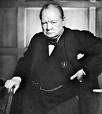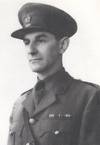The book, by author and journalist John Tilston, goes behind the scenes of historic events when Winston Churchill returned to the British government as First Lord of the Admiralty.
Just after midnight on October 13th 1939, Captain Gunther Prien surfed German U-Boat 47 on the incoming tide through tricky defences and into the British Royal Navy’s main base at Scapa Flow in northern Scotland.
There were few chinks in the defences, and Churchill had ordered the Royal Navy to move quickly to plug the remaining gaps with two more sunken ships to add to those already in place and to the submarine nets.
The gap in the southern entrance to Scapa Flow was just metres wide.
Yet 31-year-old Prien, in a display of skilful navigation, guided his boat through to the very heart of the Royal Navy’s base and sank the battleship Royal Oak, condemning 832 men to a watery grave. Prien was hailed as a hero of the Third Reich and personally decorated by Hitler.
But questions remain about how Prien and his commander Rear Admiral Karl Doenitz got such pinpoint information.
The “Official History of the Second World War: The War at Sea Volume One”, published by the British government (Her Majesty's Stationary Office) in 1954 concluded that “There has been a good deal of criticism of the [Royal Navy] intelligence provided from London … It must be admitted that, during the early months of the war, the procurement by the enemy of intelligence regarding our warship dispositions and movements was superior to our own”.
Did the Germans have a well-placed spy in London? We’ll now never know for sure because immediately after the War a senior officer in the Royal Navy ordered that sensitive papers be burned. But Churchill is known to have suspected there was an enemy spy within the Admiralty.
“Churchill’s Mole Hunt” is a fictional account based on detailed historical research of the key characters involved: from Roosevelt and Churchill, through US Ambassador Joe Kennedy, renegade Scottish MP Jock Ramsay and MI5’s Maxwell Knight and Joan Miller, to real life spies Wolkoff and Kent. It extends from the early London blackouts, through the sinking of Royal Oak, the Battle of River Plate and the theft of secret correspondence between Roosevelt and Churchill.
It follows a joint Scotland Yard/MI5 investigation around Westminster, Whitehall, Kensington, Pimlico, the smart embassies and pubs of central London and the gentlemen’s clubs of Pall Mall. It delves into the dealings of The Right Club to identify and trap the spy at the heart of Churchill’s Admiralty, and reveals why this has never subsequently came to light.
























